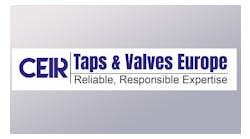BY LAKE COULSON
SPECIAL TO CONTRACTOR
I READ WITH interest John Koeller's Forum article in the September issue of CONTRACTOR regarding the Plumbing-Heating-Cooling Contractors' opposition to California's AB2496 ( "High-efficiency toilets answer questions," pg. 34). As will often occur during legislative debate, when organizations are positing their views, comments and positions can be misinterpreted and/or taken out of context, so perhaps I can offer to clarify PHCC's position on AB2496 and any misconceptions regarding our support for water conservation. I will also attempt to address some of the questions that served as the focus for Mr. Koeller's article.
PHCC supports water conservation. In fact, PHCC supports the use of tax and other incentives to encourage the use of water-conserving products and systems, including low-consumption plumbing products and fixtures, the installation and use of graywater or other wastewater recycling systems and the advancement of desalination technologies.
At the federal level, PHCC is on record asking for Congress to adequately fund any water conservation activities associated with the Clean Water Act and has sought funding for water-free technologies and the conducting of research into recycled water technology. Moreover, when federal legislation was introduced to repeal the 1.6 gal.-per-flush standard as a uniform national standard, PHCC joined with water conservation stakeholders in an aggressive campaign to defeat such legislation.
Yes, PHCC opposed AB2496. There were some good elements in 2496, such as the move toward dualflush (1.6/1.1 GPF) water closets as well as a last-minute addition for water-free technologies.
On the other hand, PHCC viewed that there were some not-so-positive elements of AB2496, such as its mandate for a 1.3-GPF standard for water closets effective in 2009. PHCC determined that it would be premature to support such a mandate before adequately field-testing these custom-sized models and questioned whether these models are compatible with existing plumbing/piping/sewer infrastructure.
I believe some of the questions posed by me in John Koeller's article were taken somewhat out of context as they were part of a strategy session/ discussion with our West Coast membership during a conference held in early May.
One of the questions posed involves a somewhat legal argument as to whether federal standards pre-empt a state wishing to pursue its own unique standard. Mr. Koeller believes that California is able to set a competing standard due to the fact that the "... 1992 federal pre-emption has expired."
I've read the relevant sections of the U.S. Energy Policy Act of 1992 as it relates to plumbing products, and I have a somewhat alternative interpretation that contrasts with Mr. Koeller's. The statute allotted five years for certain standards-developing organizations to amend the flush volume requirements, and I recognize these deadlines have long since passed. However, the statute required the secretary of the U.S. Department of Energy to formally promulgate a rule thereby waiving its pre-emptive control, thus permitting a state such as California to establish its own standard.
Again, the five-year period has well elapsed without any change in the relevant standard. However, the Energy secretary, to my knowledge, has never issued a rule formally withdrawing its pre-emptive powers. Therefore, absent such a rule from the Energy secretary "releasing" its pre-emptive control, one could conclude that federal pre-emption never expired.
Another question involved whether the failures of the 1.6-GPF models been corrected. Recent discussions with our industry members have indicated mixed results regarding whether the failures of the 1.6-GPF models have been corrected. Some reported no problems with the 1.6-GPF technology; others indicated that only recently had the 1.6-GPF models come into compliance. Others offered that only with vacuum or other pressure-assisted devices that the 1.6-GPF models perform.
And yes, my comment is accurate in that it will be our members (along with the manufacturing community) that will be responsible for addressing the customer callbacks and complaints with any non-performing 1.3-GPF models. When I raised the prospect of California going to a 1.3-GPF standard, members offered mixed reactions and recalled that the original California law, moving from a 3.5- GPF to a 1.6-GPF standard, eventually became the federal standard. The common response from our industry was a rather pragmatic one: Just demonstrate through field-testing that the 1.3-GPF models will perform.
PHCC reiterates its commitment to water conservation. PHCC takes great pride in its mission statement in preserving and protecting the health, safety and welfare of this great nation. PHCC recognizes that it has a tremendous stake in efforts to save water, our most precious resource.
Thanks to CONTRACTOR for allowing PHCC the opportunity to clarify its position on water conservation and AB2496.
Lake Coulson is vice president/ government affairs for the Plumbing-Heating-Cooling Contractors - National Association. He can be reached by phone at 800/533-7694 or via e-mail at [email protected]

